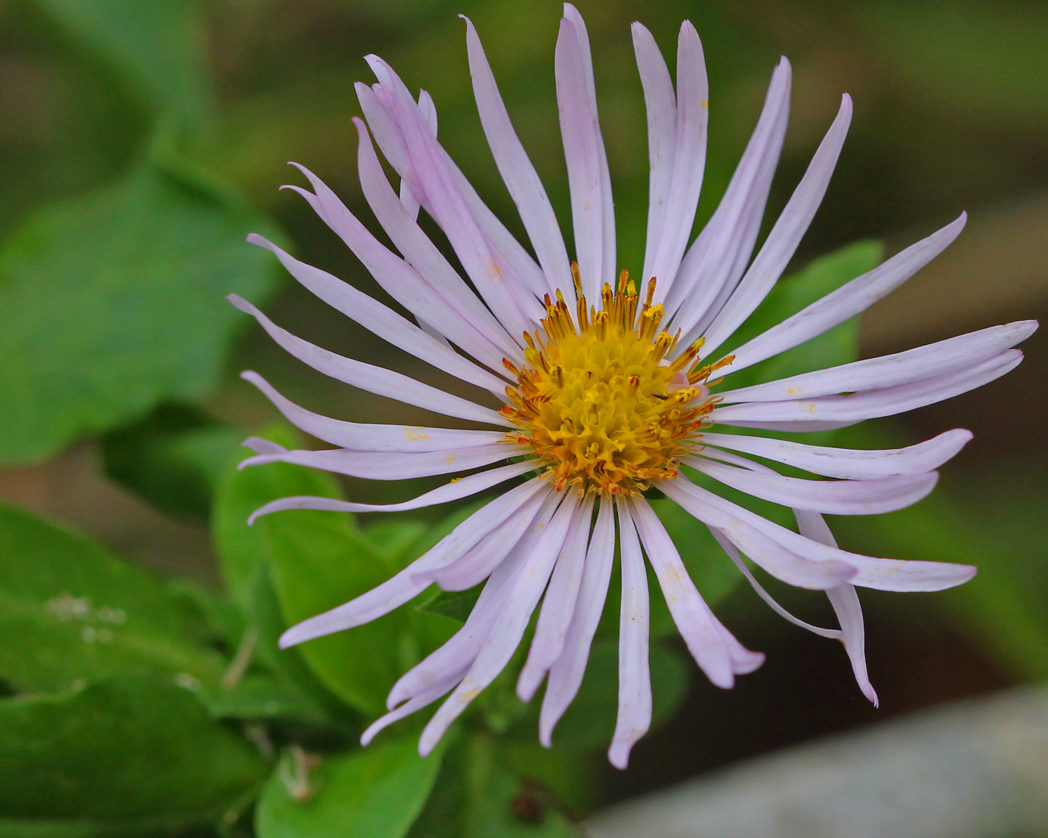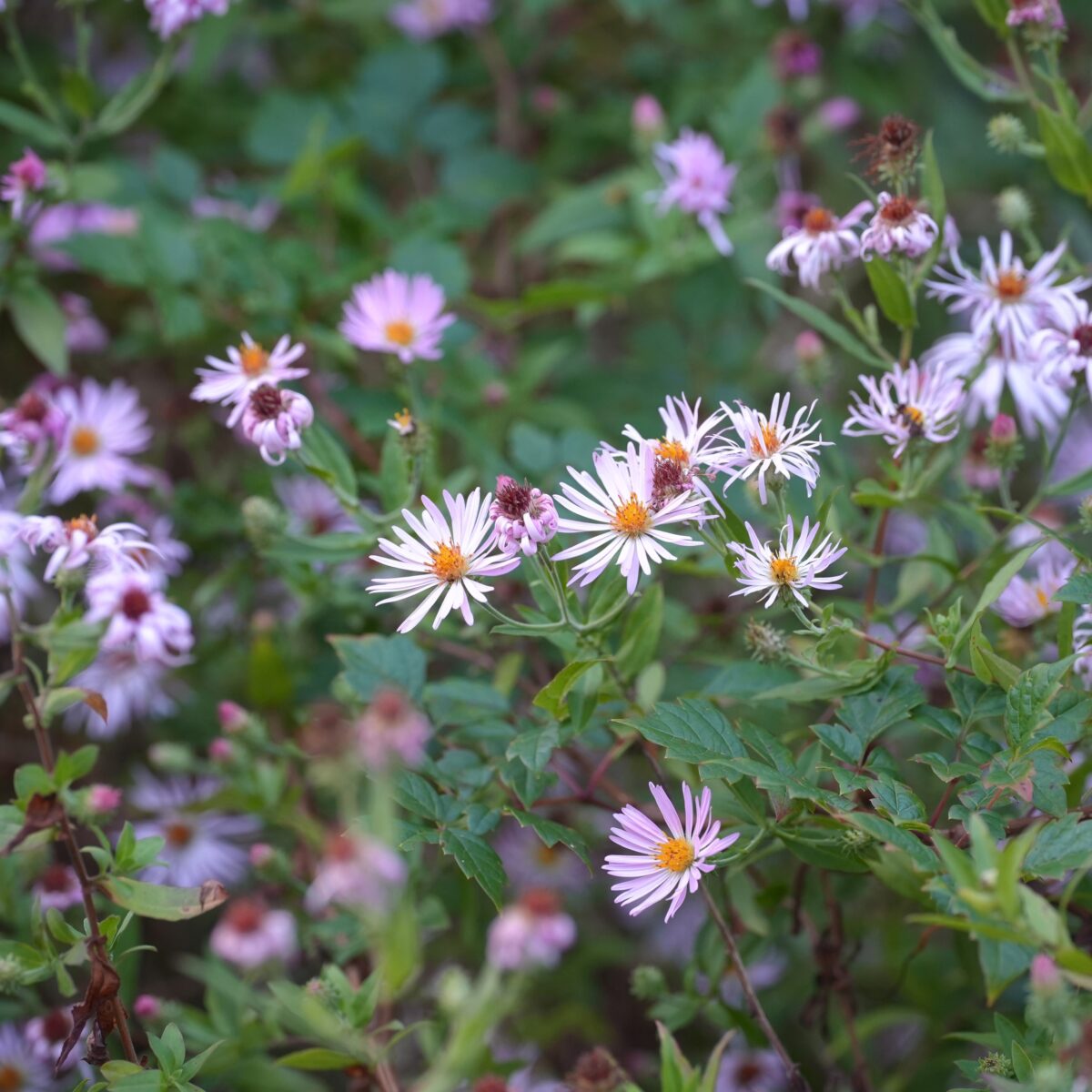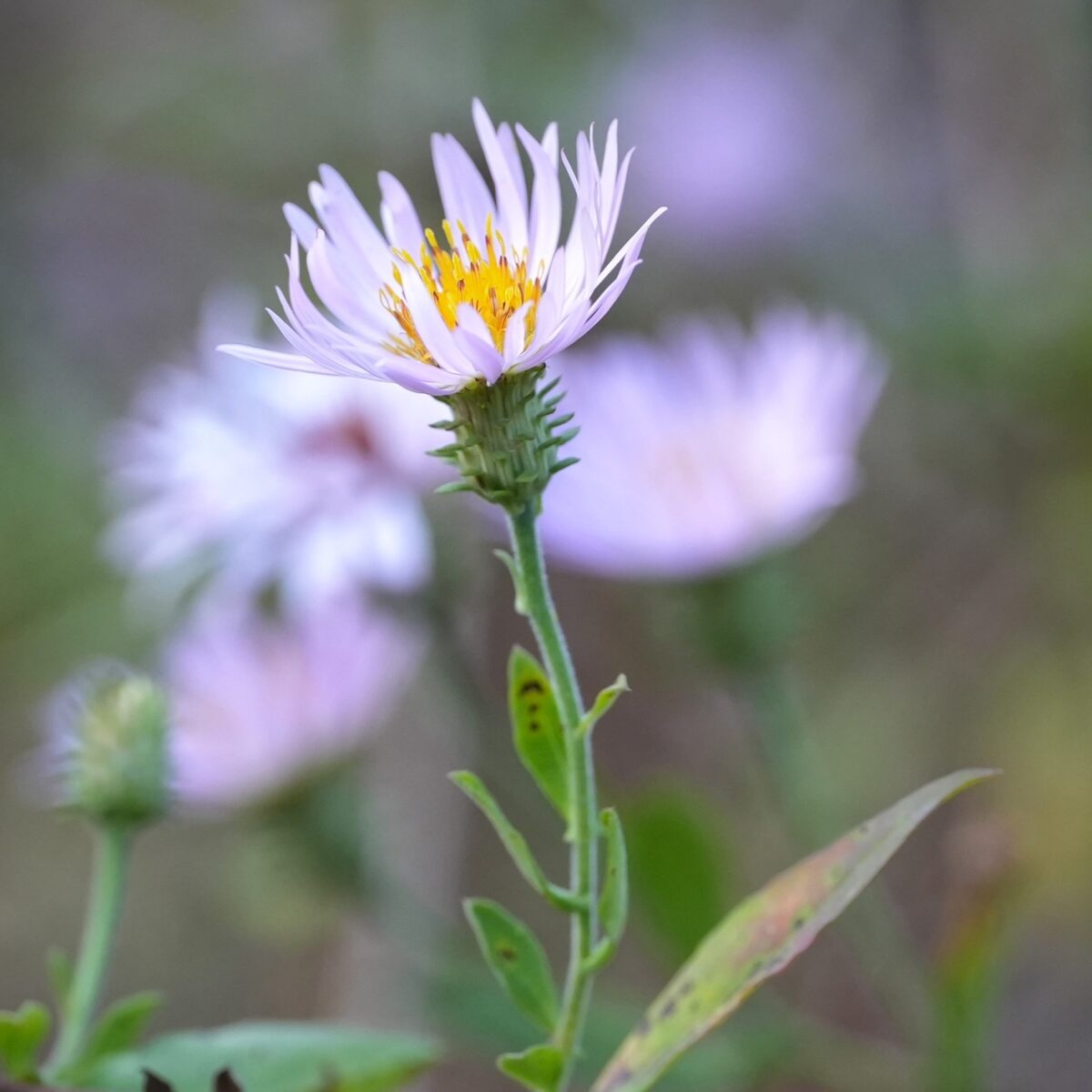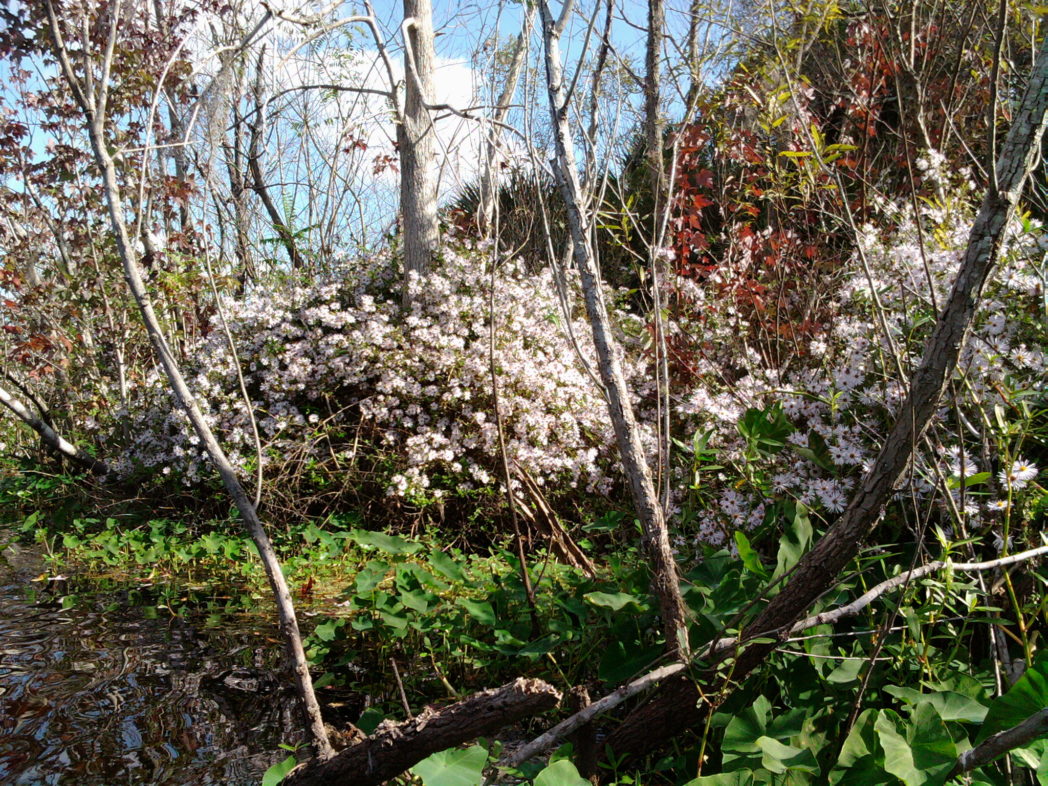Climbing aster
Pictured above: Climbing aster (Ampelaster carolinianus) by Mary Keim. Click on terms for botanical definitions. View post as a PDF.
NOTE: Climbing aster was previously named Symphyotrichum carolinianum and may still be listed as such in many print and online resources.
Climbing aster (Ampelaster carolinianus) is a sprawling vine-like shrub that occurs naturally in coastal hammocks and wet flatwoods, and along the edges of swamps, springs and streams. As a late fall- and winter-flowering species, it helps extend the options for nectar and pollen available to pollinators. It is one of the few wildflowers that will bloom in December. Flowers draw a myriad of native bees, including polyester, sweat, cuckoo, leafcutter, mining, bumble and chimney bees. Butterflies and moths also love them: Monarchs, Pearl crescents, skippers, fritillaries, Common buckeyes, Gray hairstreaks, swallowtails and sulphurs have been known to frequent the flowers for nectar.
The compound flowers have dense centers of yellow-orange disk florets surrounded by many ray florets that vary in color from lavender to purplish-pink to violet. Flowers are 1 to 2 inches in diameter and have a very sweet fragrance. Leaves are grayish-green and elliptic to ovate with entire margins and are born alternately on branches. The seed is an achene with a fluffy pappus.
Family: Asteraceae (Aster, daisy or composite family)
Native range: Throughout Florida
To see where natural populations of climbing aster have been vouchered, visit florida.plantatlas.usf.edu.
Soil: Moderately dry to moist sandy, loamy or organic soils
Exposure: Full sun to partial shade
Growth habit: 8’+ long if climbing; 5′ tall and wide if self-standing
Propagation: Seed
Florida regions of landscape suitability: North, Central, South
Garden tips: The sprawling nature of Climbing aster makes it suitable for growing along a trellis or fence. It can also be placed on slopes near the edges of ponds, lakes or streams or at the bases of wetland trees. Though a wetland species, it does well with less soil moisture and can even be used as a standalone shrub. In formal landscapes, it can take on a tangled or chaotic appearance; however, it can be pruned to any shape.
Climbing aster is often available at nurseries that specialize in native plants. Visit PlantRealFlorida.org to find a native nursery on your area.
Learn more about Climbing aster from the Florida Native Plant Society and the Institute for Regional Conservation.




